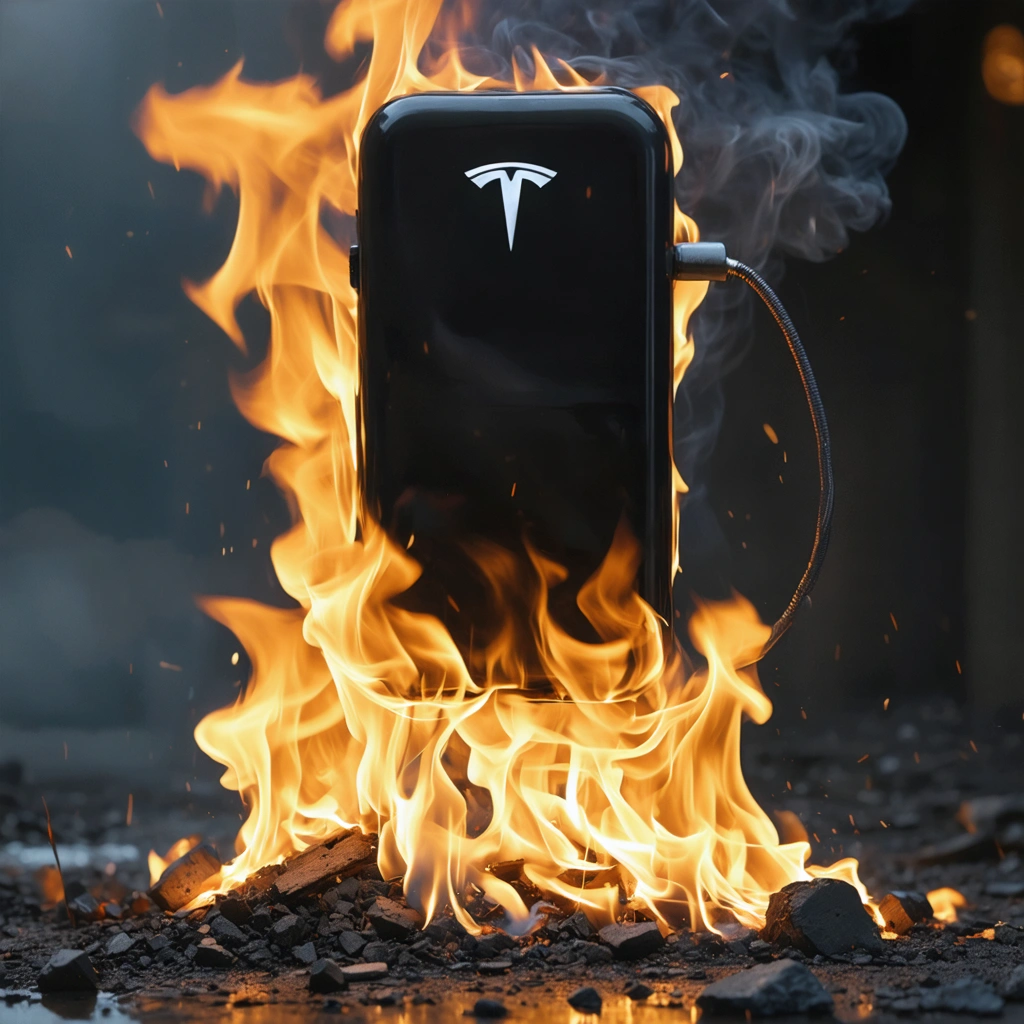
In a remarkable and troubling incident that has caught the attention of both the business and energy sectors, a man set himself on fire while attempting to burn three Tesla chargers at a charging station in a South Carolina parking lot. This event, which ultimately led to severe injuries and a dramatic impact on public perception of electric vehicle (EV) infrastructure, warrants comprehensive analysis from multiple angles. The following discussion provides an in-depth look at the event, its context, implications for the EV charging market, and the broader social and economic repercussions.
Overview of the Incident
This incident occurred at a busy charging station, drawing attention from local authorities and media. The malfunction in rational judgment became evident when the individual, exhibiting signs of distress and apparent discontent with emerging charging solutions, deliberately set fire to the Tesla chargers. However, as fate would have it, he was quickly overwhelmed by his actions when the flames reached his clothing, leading to a self-inflicted burn injury.
Immediate Implications
- Rapid Response from Local Emergency Services: Emergency response teams quickly attended to the site to prevent further escalation and to tend to the injured individual.
- Operational Disruption: The disruption at the charging station, situated at a prominent location in South Carolina, temporarily affected local traffic and raised questions about potential vulnerabilities in EV infrastructure.
- Media and Public Reaction: The bizarre nature of the incident generated substantial media coverage, prompting widespread public commentary and discussion regarding the motivations behind such actions.
Context Within the EV and Charging Industry
Electric vehicles and their supporting infrastructure have been pillars of modern sustainable energy solutions. Tesla, as a prominent leader in the EV market, has invested heavily in robust and technologically advanced charging stations. This incident not only poses questions about individual behavior but also highlights the potential for isolated acts to impact corporate reputation and consumer confidence in emerging technologies.
Impact on Charging Station Infrastructure
Business considerations in the charging industry must now include strategies for reinforcing infrastructure security, both from external sabotage and incidents of accidental harm. Some areas of focus include:
- Enhanced Security Measures: Implementation of surveillance systems, alarms, and remote shutdown capabilities to mitigate risks.
- Regular Maintenance and Safety Protocols: Institutional checks and safety systems designed to detect potential tampering and hazardous conditions before escalation.
- Insurance and Liability Considerations: Assessing and updating insurance policies to cover a broader spectrum of incidents, thereby safeguarding both manufacturers and station operators.
Business and Economic Perspectives
From a business standpoint, incidents such as these can have far-reaching economic impacts. Investors and stakeholders in the EV industry are particularly sensitive to events that could undermine the reliability of infrastructure and public confidence in leading brands like Tesla. Additionally, this case may serve as a catalyst for manufacturers and station operators to re-examine safety standards and emergency response protocols, ultimately driving innovation and operational adjustments.
Risk Management and Strategic Considerations
The following table outlines a comparative analysis of pre- and post-incident risk management strategies implemented in the charging station sector:
| Strategy Aspect | Pre-Incident Approach | Post-Incident Revision |
|---|---|---|
| Security Monitoring | Limited surveillance and reactive responses | 24/7 monitoring with proactive threat analysis |
| Emergency Preparedness | Standard emergency protocols | Enhanced emergency drills and rapid response coordination |
| Insurance Coverage | Basic coverage for technological failures | Expanded policies including physical sabotage and vandalism |
This table highlights how a singular incident can prompt significant reassessments of risk management frameworks, ensuring that businesses are better prepared to handle unforeseen hazards.
Legal and Societal Implications
Beyond the immediate economic and operational considerations, legal and societal repercussions are beginning to emerge. Authorities are facing the challenge of distinguishing between criminal behavior and mental health issues that might have influenced the decision-making process of the individual involved. Legal proceedings, insurance disputes, and even public policy debates are now likely focal points following this event.
Moving Forward: Policy and Public Safety Considerations
Recommendations for policymakers and business leaders include:
- Policy Reforms: Revisiting safety regulations for public infrastructure to include provisions specifically addressing the vulnerabilities of high-tech installations like charging stations.
- Mental Health Interventions: Integrating mental health support into community and workplace safety programs, ensuring that potential threats are mitigated at an early stage.
- Community Engagement: Establishing open lines of communication with the public to foster transparency regarding safety measures and infrastructure integrity.
By addressing both the technical and human aspects of such incidents, businesses and governing bodies can pave the way for a more resilient and informed EV ecosystem, reassuring current and future stakeholders that effective measures are in place to manage possible instances of vandalism or self-harm on public property.




